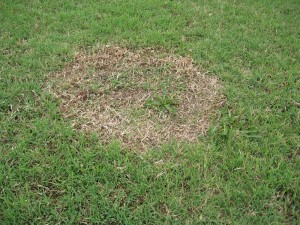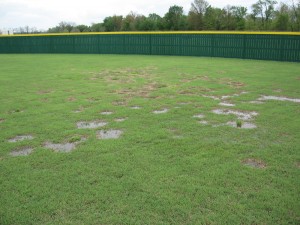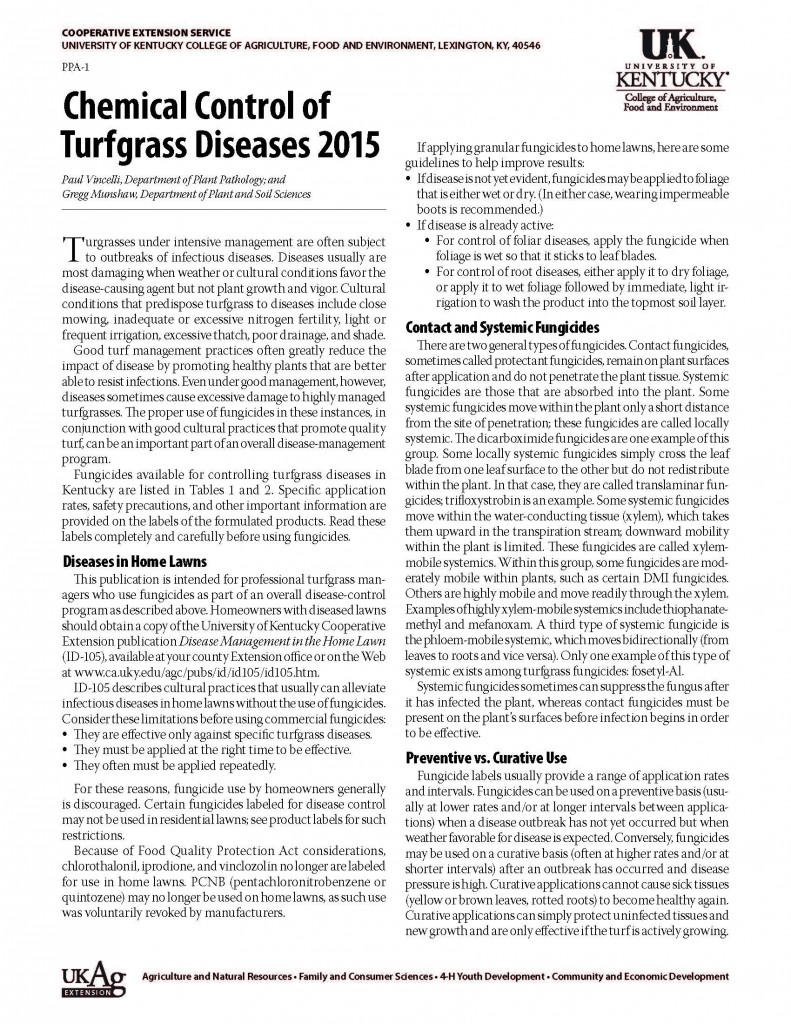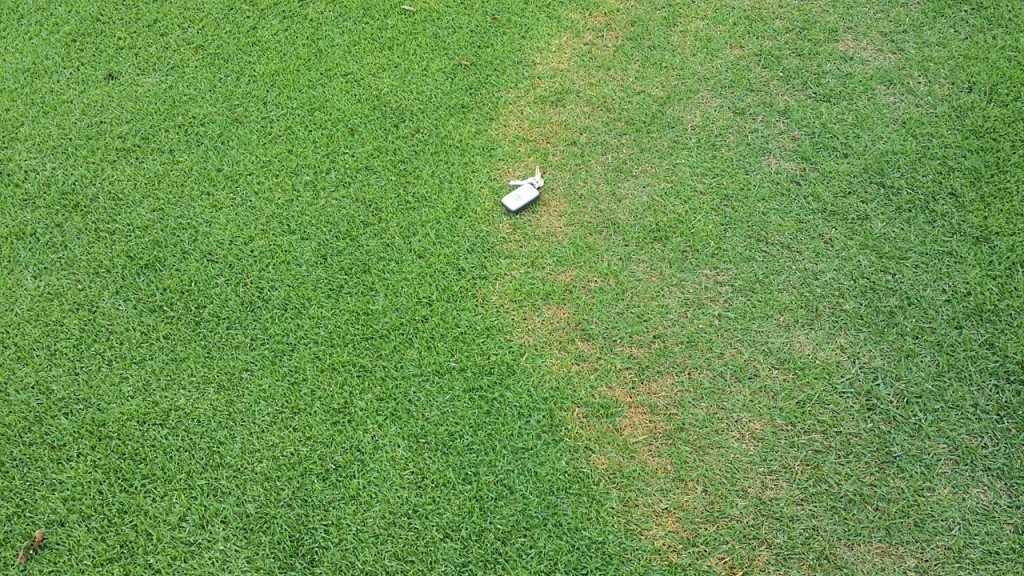(Megan Kennelly)
(Photos courtesy Jacob Weber, KSU Extension)
Spring dead spot is a severe root disease of bermudagrass. We see symptoms in the spring, as the turf is greening up. Affected areas remain brown, and the turf collapses leaving a sunken area that is prone to weed invasion. It can take a big chunk of the summer for recovery.
In the past, fungicide treatments in Kansas have had inconsistent results. Applications in September have sometimes had good results, but sometimes they have not worked at all.
There is some info about fungicide sprays for spring dead spot HERE (check page 20). Also, Dr. Lee Miller next door in Missouri reports that he has recently seen good results from Velista applied twice (mid September + mid October). Click HERE for Dr. Miller’s comments, paying particular attention to the fact that this usage involves a Section 2(ee) recommendation, not the main label.







